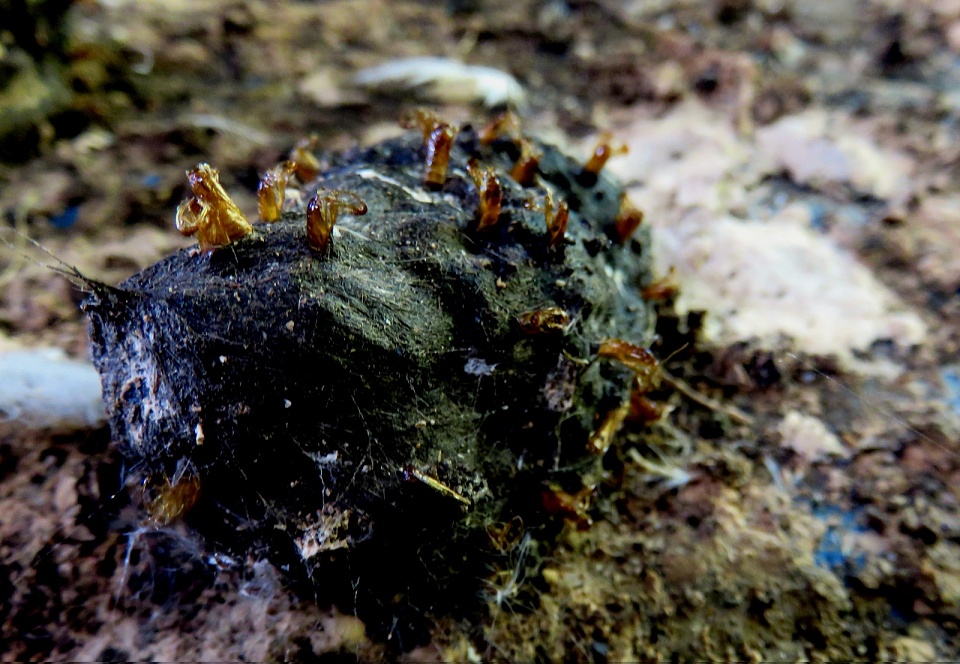Exit strategy
In case you're wondering, it's a barn owl pellet, a regurgitated bolus of indigestible matter, the residue of a diet of small mammals, birds and insects. Many pellets lie scattered beneath the beams where owls perch in an old barn I occasionally pass.
No owls were visible so I took a close look at the pellets and was interested to see the brown spikes dotting the surface like almonds studding a trifle. At first I thought they were tiny fungi (which do grow on pellets) but then I realised they were empty pupa cases: something living inside in the pellet had hatched and flown away.
Back home it didn't take me long to discover, to my surprise, that these were - clothes moths! Yes, before woollen socks and hats and coats existed, the species of moth that came to infest them lived on whatever material contained wool, fur and feathers. Owl pellets are an ideal source of food and the barn is a protected environment in which the moths can lay their eggs on the pellets, the larvae can eat the discarded organic matter inside and then pupate in cocoons positioned for an easy get-away when the time comes.
Now that so many of us use artificial fibres for clothes and furnishings the dwindling number of barn owls must be of some concern to the clothes moth community.


Comments
Sign in or get an account to comment.


